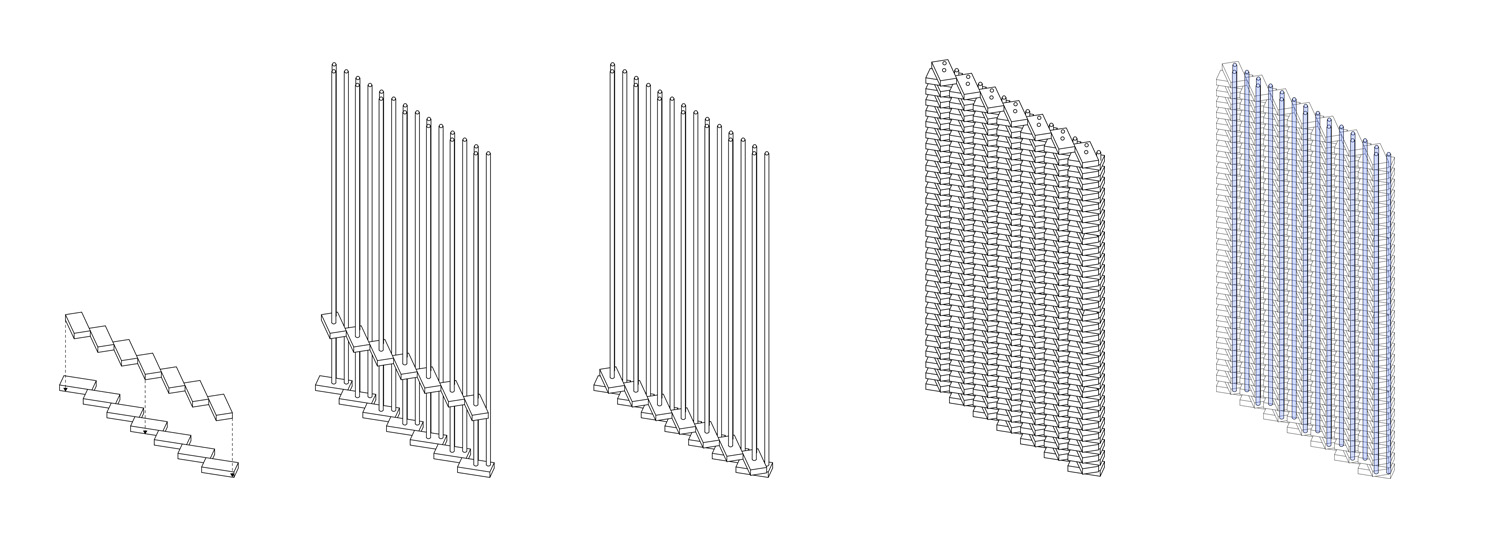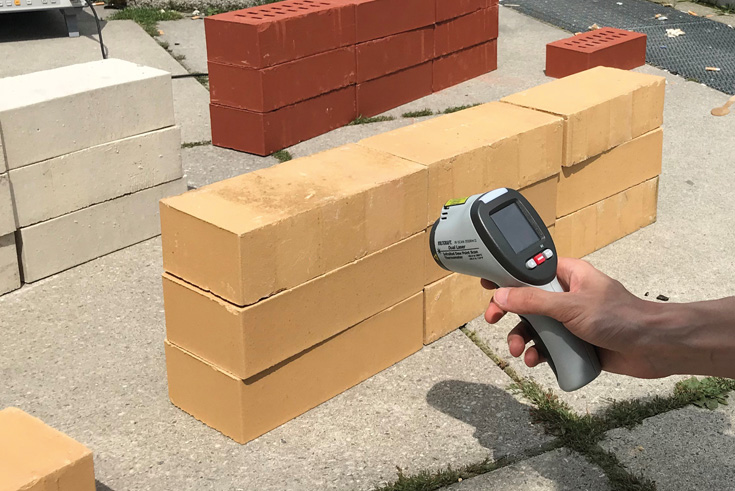Climate-active Brick Facades

Brick production is constantly being improved and the properties of ceramic bricks optimised. In recent years, this has increasingly affected their sound and thermal insulation properties. However, less research has so far been done into the climate-impacting aspects of brick materials and their potential to improve urban microclimates. This is where the Adaptive Brick research project of the TU Munich, headed by Philipp Molter, Associate Professor at the Chair of Design and Building Envelopes (Lehrstuhl für Entwerfen und Gebäudehülle), comes in. The team is investigating the use of irrigated solid bricks as a component of climatically-effective facades that can counteract the phenomenon of urban heat islands.
Optimizing the microclimate
Like other materials, brick facades influence the urban microclimate through their radiation temperature. Metal and glass surfaces do not store heat, and cool down just as quickly as they heat up. Natural and artificial stones such as concrete and bricks have a high heat capacity, and are therefore are able to store heat for long periods of time. If several warm days follow one another, their material temperature rises further and further. In a comparison of all common facade materials, the best results with the lowest surface temperatures are achieved by greened facades. This is due to the evaporation cooling through the moisture in the leaves. The TU Munich study will now seek to determine whether this effect can also be transferred to bricks due to their porosity and water-absorption capacity.
Hygrothermics in action
In a test set-up, the hygrothermal relationships, i.e. the coupled heat and moisture transport in the bricks, were determined and the surface temperatures and intensity of the evaporative cooling were measured for bricks of different density and colour. To this end, different types of irrigation were tested under changing environmental conditions at different times of the day. On average, the surface temperatures of wet bricks were found to be around 7 °C lower than those of dry bricks due to evaporation cooling. The colour of the bricks also influences the temperature curve, as a difference of 5.4 °C between light and dark bricks showed. The surface temperature of the different types of brick shows different heating potentials as well as varying evaporation behaviour. A red brick with holes exhibited the coolest temperatures, probably due to it having the lowest density, a high water absorption capacity and therefore also the strongest evaporation cooling.
After the initial series of tests, the scientists now assume that the brick properties of porosity, water absorption behaviour and colour in combination with the effect of evaporative cooling can be used specifically to lower the surface temperatures of buildings and can thus contribute to solving the problem of urban heat islands. They are currently working on a concrete irrigation system for integration into brick facades.

